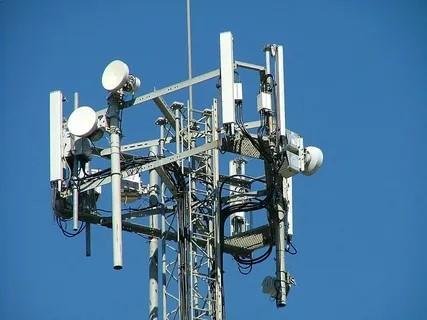The global tower mounted amplifier (TMA) market is poised for significant growth, projected to expand from an estimated USD 4,135.7 million in 2025 to USD 7,745.5 million by 2035, demonstrating a robust Compound Annual Growth Rate (CAGR) of 6.5% over the forecast period. This substantial expansion is primarily fueled by the escalating demands of network densification and the accelerating global rollout of 5G infrastructure.
Exhaustive Market Report: A Complete Study
https://www.futuremarketinsights.com/reports/tower-mounted-amplifier-tma-market
Amplifying Connectivity: The Strategic Role of TMAs
Tower Mounted Amplifiers (TMAs) are critical components in modern telecommunications infrastructure, strategically mounted at the top of cell towers to significantly improve signal quality and coverage. These specialized devices amplify weak uplink signals from mobile devices before they reach the base station receiver, thereby enhancing overall network performance by reducing signal-to-noise ratios. The strategic placement of TMAs near antennas minimizes signal loss in feeder cables, extending network coverage and boosting data throughput. Their implementation has become particularly vital in urban environments where signal interference poses substantial challenges. TMAs also play an essential role in optimizing network efficiency by reducing the power requirements of mobile devices and extending battery life.
Advanced TMAs feature sophisticated capabilities including advanced filtering for precise signal processing across multiple frequency bands, built-in monitoring systems for tracking performance metrics, weather-resistant casings for environmental protection, and low noise amplification to ensure minimal signal distortion. Remote configuration options allow for real-time adjustments, while dual-band and triple-band support accommodate various network configurations. TMAs are deployed by mobile network operators to enhance coverage in urban and rural areas, by industrial facilities for reliable wireless connectivity, by public safety networks for emergency communication, and integrated into transportation hubs, sports venues, and commercial buildings for consistent signal strength and improved indoor reception.
Market Dynamics: Densification, 5G, and Capital Challenges
The market’s growth is significantly propelled by rising network densification demands. As major metropolitan regions experience exponential growth in signal enhancement requirements, particularly in newly developed commercial zones, urban expansion continues to strain existing network infrastructure. This forces operators to seek advanced amplification solutions. Recent construction projects, including shopping complexes, office towers, and residential high-rises, are increasingly incorporating dedicated TMA zones, reflecting a growing awareness of connectivity requirements. Transport hubs, stadium renovations, and commercial district redevelopment plans now routinely prioritize TMA installations as essential infrastructure components.
Furthermore, global 5G infrastructure development is accelerating TMA integration. Field tests consistently demonstrate substantial improvements in network performance through strategic TMA placement. Industrial parks are leading early adoption, showcasing practical applications of 5G-enabled TMAs in manufacturing environments. Smart city initiatives are driving the standardization of TMA specifications, creating predictable deployment frameworks, while transport networks report enhanced connectivity metrics following targeted TMA installations.
However, the market faces a significant challenge in the form of substantial capital requirements. Financial analysis reveals high upfront costs associated with comprehensive TMA deployments. Elevated equipment pricing, significant installation expenses, and demanding maintenance contract terms can strain operational budgets, particularly for smaller network operators. System upgrade requirements, training programs, weather protection measures, and complex logistical expenses for remote installations further add to overall deployment costs, creating barriers to widespread adoption.
Segment Insights: Network Operators and Digital Technology Lead
The Network Operators segment is expected to drive rapid TMA market expansion, with a projected CAGR of 7.9% from 2025 to 2035. This growth is fueled by rising data consumption patterns, continuous network optimization efforts, rural coverage initiatives, and urban network densification programs. The global rollout of 5G networks and the expected growth of wireless data traffic will continue to accelerate demand for high-performance, efficient TMAs.
In terms of technology, Digital TMAs are set to dominate the market, holding a 68.5% value share in 2025. Digital technology offers superior signal processing capabilities and reduced interference levels. Advanced digital filters enable precise frequency selection, and real-time monitoring systems allow operators to optimize performance remotely, reducing maintenance costs. Digital TMAs also support multiple frequency bands simultaneously and offer automated fault detection capabilities, minimizing network downtime.
Competitive Landscape: Global Powerhouses and Regional Specialists
The TMA industry is characterized by a mix of global powerhouses and regional specialists. CommScope, Kathrein, and Amphenol are dominant market leaders, controlling major telecom contracts across continents through extensive distribution networks, advanced manufacturing facilities, and strong R&D. They represent approximately 35-40% of the marketplace.
Radio Frequency Systems, ACE Technologies, and Microlab excel in regional markets by offering specialized products and localized support services, capturing approximately 15-20% of the market. Local manufacturers account for roughly 25-30% of the total market size, serving specific segments through competitive pricing and direct relationships with tower companies.
Key industry updates include Shenzhen Action Technologies launching a multi-band TMA in 2024, CommScope introducing a Dual Band TMA with advanced features in 2024, and Kaelus launching next-generation TMAs with digital monitoring capabilities in 2023, all reflecting continuous innovation in the market.
Key players in the Tower Mounted Amplifier Industry include CommScope, Amphenol Antenna Solutions, Kathrein SE, Kaelus, Radio Frequency Systems (RFS), Westell Technologies, Filtronic, Comba Telecom Systems, SOLiD, and Huawei Technologies. These companies are continually focusing on energy efficiency improvements, remote monitoring capabilities, multi-band support, and signal processing enhancements to maintain their competitive edge in this rapidly evolving market.
Get Ahead with Our Report: Request Your Sample Now!
https://www.futuremarketinsights.com/reports/sample/rep-gb-4087
Discover trends shaping similar markets-read our related reports.
Tower Mounted Amplifier Market Share Analysis
https://www.futuremarketinsights.com/reports/tower-mounted-amplifier-market-share-analysis
USA Tower Mounted Amplifier Market
https://www.futuremarketinsights.com/reports/usa-tower-mounted-amplifier-market
Germany Tower Mounted Amplifier Market
https://www.futuremarketinsights.com/reports/germany-tower-mounted-amplifier-market
Future Market Insights Inc.
Christiana Corporate, 200 Continental Drive,
Suite 401, Newark, Delaware – 19713, USA
T: +1-845-579-5705
For Sales Enquiries: sales@futuremarketinsights.com
Website: https://www.futuremarketinsights.com
Future Market Insights, Inc. (ESOMAR certified, recipient of the Stevie Award, and a member of the Greater New York Chamber of Commerce) offers profound insights into the driving factors that are boosting demand in the market. FMI stands as the leading global provider of market intelligence, advisory services, consulting, and events for the Packaging, Food and Beverage, Consumer Technology, Healthcare, Industrial, and Chemicals markets. With a vast team of 400 analysts worldwide, FMI provides global, regional, and local expertise on diverse domains and industry trends across more than 110 countries.
This release was published on openPR.



















